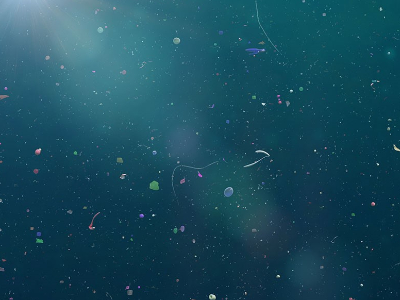Oceans under Threat
The threats to our oceans are huge and getting worse and our members see this in all latitudes of the world.
The marine habitat is degrading through pollution from chemicals, plastics and the extensive use of agricultural and horticultural nutrients. In turn, this is leading to species extinction and biodiversity loss. This is compounded by illegal fishing, overfishing, and careless and unnecessary bycatch.
Moreover, every year ghost nets (commercial fishing nets that have been lost, abandoned, or discarded at sea) are responsible for trapping and killing millions of marine animals including sharks, rays, bony fish, turtles, dolphins, whales, crustaceans, and birds.
Some of the most evident degradation of the marine environment is witnessed in the damage and destruction of coral reefs. As cruisers, we all know that healthy coral reefs are teeming with life and many thousands of species depend on coral reefs for their continued existence.
These vital habitats are threatened by a range of human activities and especially pollution, unsustainable fishing practices, disease, global climate change, ship groundings and careless anchoring. Coral ecosystems face serious threats, mainly from the effects of global climate change, unsustainable fishing, land-based pollution, and ocean acidification.
The massive global industrialisation over the last 200 years has brought considerable economic and social benefits for many people all over the world, but at the same time the concentration of carbon dioxide (CO2) in the atmosphere has increased due to the burning of fossil fuels and land use change. About 30 percent of the CO2 that is released in the atmosphere is absorbed by the oceans, and as levels of atmospheric CO2 increase, so do the levels in the ocean.
CO2 causes seawater to become more acidic and reduces carbonate ions which are essential for the growth of sea shells and coral skeletons, threatening such as oysters, clams, sea urchins, shallow water corals, deep sea corals, and calcareous plankton. In addition, acidification decreases the ability of some fish, such as clown fish, to detect predators and can add a further threat to marine ecosystems.
One of the biggest threats to ocean cruisers comes from weather pattern disruption, caused by climate change. As the temperature increases, more and more sea ice is lost, with a rapid thinning of ice now taking place in the Arctic - the region is warming at three times the global rate and its ice is essential for keeping the planet cool. This is now affecting the large system of ocean currents in the Atlantic – which includes the Gulf Stream, otherwise known as the Atlantic Meridional Overturning Circulation, or AMOC, which transports warm, salty water from the tropics northward at the ocean surface and cold water southward at the ocean bottom. If that system collapses, it would lead to dramatic changes in worldwide weather patterns.
Furthermore, sea ice loss leads to rising sea levels which pose a very serious threat to coastal communities and the people of low-lying islands and countries.
Did you know?
|
|
Did You KnowEmily Winter - 02/04/2024A collection of interesting facts about the environment and ocean threats. Keywords: CO2, seabirds, carbon, seagrass, oysters, nanoplastic, pollution, sewage |
Related Articles
A commercial freighter runs aground in the Arctic en route from China
As ice retreats from the Arctic the North West Passage is becoming a route for freight. A 21,000 ton freighter is now grounded in the Franklin Strait.
by Simon Currin - 08/09/2025
Southern Ocean saltier, hotter and losing ice fast.
Researchers have discovered a dramatic and unexpected shift in the Southern Ocean, with surface water salinity rising and sea ice in steep decline.
by Simon Currin - 14/07/2025
Abandoned boats littering our shores
Abandoned wrecks and end-of-life vessels hogging cheap moorings and clogging up Britain’s foreshores are a growing problem and environmental concern.
by Simon Currin - 03/07/2025
Is the ocean ‘having a moment’? The UN summit where the world woke up!
According to this report there were some good outcomes from UNOC3 albeit in some cases like bottom trawling more could have been done.
by Phil Heaton - 14/06/2025
Sea acidity has reached critical levels, threatening entire ecosystems
Ocean acidification has already crossed a crucial threshold for planetary health, scientists say in unexpected finding
by Simon Currin - 09/06/2025
UNITED NATIONS OCEAN CONFERENCE
The high-level 2025 United Nations Conference to Support the Implementation of Sustainable Development from 9th-14th June.
by Simon Currin - 09/06/2025
French Polynesia Just Created The World’s Largest Marine Protected Area
French Polynesia announced the creation of the world’s largest Marine Protected Area (MPA), at the U.N. Ocean Conference in France on Monday.
by Simon Currin - 09/06/2025
‘Ocean’ is the latest film by David Attenborough
David Attenborough has celebrated his 99th birthday by releasing his latest masterpiece. His film, Ocean, is a powerful documentary examining the health and future of our oceans.
by Simon Currin - 13/05/2025
World’s Sea-Ice falls to a record low
According to data from the US National Snow and Ice Data Center (NSIDC), the sea-ice in polar regions is now at record low levels.
by SC - 15/02/2025
Extreme weather - again!
Storm Eowyn will bring Force 12 winds to western sea areas later in the week.
by Simon Currin - 23/01/2025
Voyages to the Wild: Collisions with Whales
How boat collisions are endangering one whale species in particular
by Charlie Young - 16/12/2024
OCC Webinar: 'Fishing our Seas Dry' by Charlie Young
An Ocean Cruising Club Webinar that tells the harrowing story of the over exploitation that is happening in our oceans.
by Simon Currin - 01/11/2024
Climate warming is turning the Antarctic Peninsula green
A recent article in the prestigious scientific journal, Nature, assessed changing ecosystems in the Antarctic as temperatures rise.
by Simon Currin - 20/10/2024
Antarctic sea ice on cusp of record winter low for second year running
Antarctic sea ice hit record lows for the second consecutive year in 2024, indicating a "new state" of extreme ice loss.
by Simon Currin - 04/10/2024
Dugongs in Vanuatu
Dugongs in Vanuatu are becoming rare due to threats such as fishing, boat traffic, and climate change. Cyclones have damaged their seagrass habitat. More data is required to inform their conservation.
by Simon Currin - 04/07/2024
Neuston: Ocean Surface’s Secret Ecosystem
Neuston, surface dwelling marine organisms, are a vital yet understudied part of our ocean ecosystem. The threats to marine life from plastic pollution, highlight the need for more research.
by Simon Currin - 29/06/2024
Oceans face extreme heat, oxygen loss and acidification
The world’s oceans are facing a “triple threat” of extreme heating, a loss of oxygen and acidification, with extreme conditions becoming far more intense in recent decades.
by Simon Currin - 04/06/2024
Project Manaia
Update from OCC Member Manuel Marinelli
by Steve Brown, Specialist Roving RC: Environmental - 03/05/2024
Project Manaia Seagrass Restoration now enters its 7th year
Headed by OCC member Manuel Marinelli, Project Manaia has been working on monitoring the health and habitat of Seagrass throughout the Mediterranean.
by Steve Brown, Specialist Roving RC: Environmental - 15/03/2024
Bottled water and clean oceans
A personal account of plastic pollution caused by water bottled in single use plastic
by Simon Currin - 03/02/2024
It's official: 2023 was the warmest year since the pre-industrial period
Marine heatwaves were also recorded around the globe, including in parts of the Mediterranean, Gulf of Mexico, Caribbean, Indian Ocean, North Pacific, and much of the North Atlantic.
by Daria Blackwell - 13/01/2024
Pollution and global warming are fueling female-biased sex ratios in sea turtles
Pollution and warming temperatures are inducing a sex imbalance among endangered green sea turtles, some populations of which are already 99% female, limiting the gene pool and fertilization rates.
by Daria Blackwell - 11/01/2024
Global wave power is increasing
Increasing storminess, warmer seas, and rising sea levels are contributing to an increase in significant wave height and wave energy in many parts of the world.
by Daria Blackwell - 30/12/2023
5th National Climate Assessment is being issued
Climate change is now affecting all regions of the US. The Overview identifies the key changes that have already been documented and are currently underway.
by Daria Blackwell - 19/12/2023
Copernicus reports that 2023 will be the warmest year on record
The remarkable year continues, with the warmest boreal autumn ever.
by Daria Blackwell - 10/12/2023
Tackling Climate Change – United Nations Conference COP28
The United Nations COP28 on Climate Change is being held in Dubai, UAE from 30 November to 12 December.
by Phil Heaton - 28/11/2023
Study estimates over 170 trillion plastic particles afloat in the world’s oceans
That is more than 21,000 pieces of plastic in the oceans for each of the Earth’s 8 billion residents.
by Daria Blackwell - 16/11/2023
A potentially disastrous hurricane hit Mexico’s west coast
Hurricane Otis grew from a tropical storm yesterday morning to a Category 5 hurricane by the end of the day.
by Daria Blackwell - 25/10/2023
Scorching heat wave across South America
While Earth had the hottest August and September on record, heatwaves were recorded in both the Northern and Southern hemispheres, with record temperatures across multiple countries.
by Daria Blackwell - 11/10/2023
NOAA study quantifies climate change threat to marine mammals
Over 70 percent of marine mammals in US waters face “major threats” from climate change, a study by the National Oceanic and Atmospheric Administration (NOAA) has found.
by Daria Blackwell - 09/10/2023
Red List Status and Extinction Risk for the World's Cetaceans
One in 4 cetacean species (26% of 92) were assessed as being threatened with extinction.
by Daria Blackwell - 09/10/2023
A record-breaking month and year-to-date
2023 is on track to become a record-breaking year with the global mean temperature to date at 0.52 degrees Celsius higher than average, says the European Union's Copernicus Climate Change Service.
by Daria Blackwell - 05/10/2023
Antarctic winter sea ice hits 'extreme' record low
The preliminary Antarctic Sea Ice Maximum and Arctic Sea Ice Minimum are both in and the results are alarming scientists.
by Daria Blackwell - 26/09/2023
Hottest summer on record
The summer of 2023 was the hottest on record in the Northern Hemisphere, according to data from the European Union Climate Change Service released on Wednesday.
by Daria Blackwell - 07/09/2023
Forecasters increase count for Atlantic hurricane season
Colorado State University (CSU) and Tropical Storm Risk (TSR) forecasters have increased their forecasts for the 2023 Atlantic Hurricane season, citing high sea surface temperatures in the Atlantic.
by Daria Blackwell - 11/08/2023
World Ocean Day unites and rallies the world to protect and restore our planet
Celebrate the life in the oceans and take action on the 8th of June. Do it for the biodiversity. Do it for the climate. Do it for the future.
by Daria Blackwell - 02/06/2023
Experimental Sargassum Report
NOAA, in collaboration with the University of South Florida, has begun issuing weekly sargassum reports using AFAI (Alternative Floating Algae Index) for the Caribbean and Gulf of Mexico.
by Daria Blackwell - 30/05/2023
North Atlantic SST Anomalies Noted
Sea Surface Temperature (SST) and other factors have been noted as deviating from the norms for the North Atlantic in the early months of 2023.
by Daria Blackwell - 23/05/2023
NOAA Issues El Niño Watch
A transition from El Niño–Southern Oscillation (ENSO)-neutral is expected in the next couple of months, with a greater than 90% chance of El Niño persisting into the Northern Hemisphere winter.
by Daria Blackwell - 11/05/2023
UN's World Meteorological Organization warns of looming record temperatures
The development of an El Niño climate pattern in the Pacific Ocean this year is likely, with dangerously high temperatures and extreme weather events expected.
by Daria Blackwell - 10/05/2023
Brian Black Memorial Award 2023
£5,500 prizes on offer for marine environmental journalism award videos and articles
by Press Release - Theo Stocker - 24/04/2023
"Indisputable" new research proves effects of climate change are underway
It has been a rough few weeks for climate change deniers. Multiple studies have confirmed that our climate is rapidly changing, and not for the better.
by Daria Blackwell - 16/03/2023
Reflections on COP27
Novara One Planet Project member Dr Nigel Jollands reflects on the outcomes of COP27 in the lead-up to COP28. He asks, is it really "Too little, too late"?
by Dr Nigel Jollands - 08/03/2023
United Nations reach accord to protect marine life on high seas
After almost 20 years of talks, United Nations member states agreed on a legal framework for parts of the ocean outside national boundaries in the historic High Seas Treaty.
by Daria Blackwell - 05/03/2023
Warmest Years and Warmest Ocean on Record
2022 had much stand out news for many of the wrong reasons, two of them being climate oriented: the oceans were the warmest in recorded history and the last 8 years were the hottest on record.
by Daria Blackwell - 15/01/2023
State of the Oceans Report
The report explores the state of our world's oceans, from pollution and habitat degradation to the impacts of climate change, Sustainable Development Goals, and protection of marine environments.
by Daria Blackwell - 22/12/2022
A historic moment for biodiversity
Nations forge historic deal at the COP15 summit to save species. Many countries celebrated, while some say their voices were not heard.
by Daria Blackwell - 21/12/2022
Tuna and billfish are making a comeback
After almost three decades of decline, tuna and billfish have begun to recover because of proactive fisheries management. Sharks, however, continue to decline.
by Daria Blackwell - 12/11/2022
Jon Amtrup, Norwegian sailor, named winner of the Brian Black Memorial Award
The Brian Black Memorial Award 2022 winner shares his sobering story, ‘The icy sound of climate change’, and wins £4,000 in prize money and charity donations.
by Daria Blackwell - 21/10/2022
WaterBear - a free new streaming service
WaterBear, the first interactive streaming platform dedicated to the future of our planet. Watch award-winning films and documentaries anytime, anywhere.
by Daria Blackwell - 21/09/2022
Europe moves to protect Atlantic deep-sea sites from bottom fishing
On Sept. 15, the European Commission made a historic announcement: it will prohibit bottom fishing across 16,000 square kilometres or 6,200 square miles in territorial waters of the NE Atlantic.
by Daria Blackwell - 21/09/2022
UN Secretary General Declares 'Ocean Emergency'
Ahead of the UN Ocean Conference in Lisbon, Portugal, António Guterres said the world must turn the tide of rising sea levels, ocean heating, acidification and plastics pollution.
by Daria Blackwell - 05/07/2022
Global Ocean Resilience Innovation Challenge Names 9 Finalists
Ocean Resilience Innovation Challenge (ORIC), led by the Ocean Risk and Resilience Action Alliance (ORRAA), acts as an incubator by providing mentoring, leadership training and funding for some.
by Daria Blackwell - 13/06/2022
Niue, a small Pacific island protects 100% of its territorial waters
Niue covers only 261 square kilometres but possesses 317,000 square kilometres of territorial water. It has become a world leader in marine conservation.
by Daria Blackwell - 10/06/2022
Happy World Ocean Day!
Every day is World Ocean Day for members of the Ocean Cruising Club. Join us! #OCCAdventureSailing
by Daria Blackwell - 08/06/2022
No Plastic Waste Voyage Update 09 May 2022
In 2019, then 81-year-old Jon Sanders undertook an 11th circumnavigation, a voyage which he combined with a scientific endeavour -- to sample water from the oceans for microplastics analysis.
by Stephen Davis (for Jon Sanders and the team) - 27/05/2022
One Ocean, One Climate, One Future – Together
Celebrate World Ocean Day on the 8th of June (and every other day) by doing your little bit for the oceans we adore throughout the month of June.
by Daria Blackwell - 26/05/2022
Concerned about the CO2 impact of flying?
Here’s one way to offset your trips
by Manon Zwart and the OCC Environment Team - 01/04/2022
Protecting Blue Corridors
The WWF is calling on the world’s governments to extend legal protections for marine wildlife such that they overlap the “blue corridors” or "whale superhighways".
by Daria Blackwell - 21/02/2022
Aquaculture - a sustainable food source
As cruisers, we are more attuned to food sources than most. We fish responsibly taking only what we need for our own sustenance at sea. But wild fish stocks are under pressure. Can aquaculture help?
by Alex Blackwell, MSc and Daria Blackwell - 27/01/2022
The world's ocean just broke another heat record
An analysis of recent Ocean Heat Content (OHC) changes through 2021 by two international groups shows the ocean was the hottest ever recorded by humans.
by Daria Blackwell - 15/01/2022
Saving our oceans from toxic chemicals and microplastics
Edinburgh-based marine biologist, Dr Howard Dryden, started the Global Oceanic Environmental Survey (GOESFoundation.com) to tackle the root causes of climate change - loss of plankton in our oceans.
by Daria Blackwell - 14/11/2021
First ever Earthshot winners announced
The new Earthshot environmental prize initiated by Prince William has been awarded to 5 innovators including Coral Vita, who grow coral on land to return to the sea.
by Daria Blackwell - 18/10/2021
The Ocean Cleanup Gets Underway 20th of October
The day has come to celebrate the beginning of the end of the infamous Great Pacific Garbage Patch.
by Daria Blackwell - 18/10/2021
Biodiversity under threat alongside climate change
Biodiversity faces growing pressures from global changes, including climate change, habitat loss, invasive species, ecosystem collapse and pollution. COP15 and COP26 are tackling both.
by Phil Heaton & Daria Blackwell - 11/10/2021
OCC members can help monitor status of world coral reefs
The Sixth Status of Corals of the World 2020 report is the first since 2008, and the first based on the quantitative analysis of a global dataset contributed by more than 300 members of the network.
by Daria Blackwell - 08/10/2021
All drains lead to the sea - Clean Sailors on greywater
When we wash dishes, take a shower, brush our teeth and clean our boats, guess where our wastewater ends up? Yup, the sea. So, let’s talk about ‘greywater’.
by Holly Manvell and Crew of Clean Sailors - 20/09/2021
World’s 1st Satellite-Based Coral Reef Map & Monitoring System Deployed Globally
Researchers have completed a comprehensive online atlas of the world’s coral reefs by using more than two million satellite images from across the earth.
by Daria Blackwell - 12/09/2021
What we mean when we say: 'Microplastics'
We've all heard of them, but what do they mean for us and the waters we sail? Sailors, forget the saying "out of sight, out of mind"; just because we cannot see them, doesn’t mean they aren't there.
by Clean Sailors Crew - 26/02/2021




















.png)





.png)



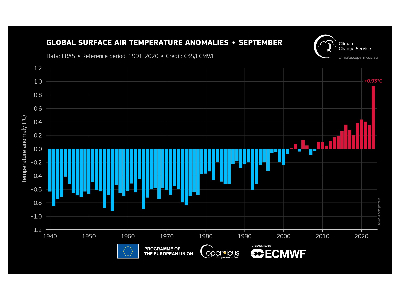



.png)



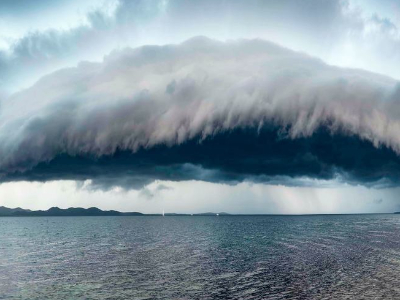
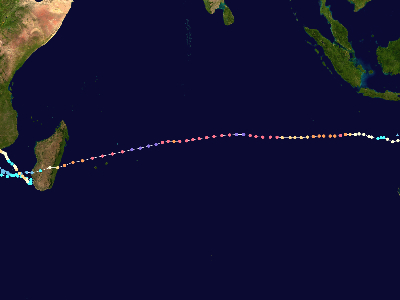



.png)
.png)
.png)

.png)

.png)
.png)






.png)

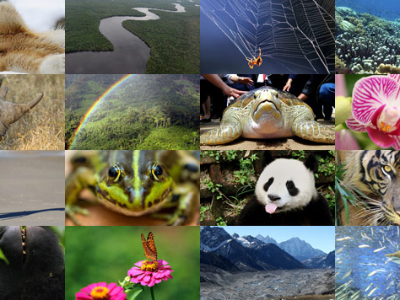
.png)


